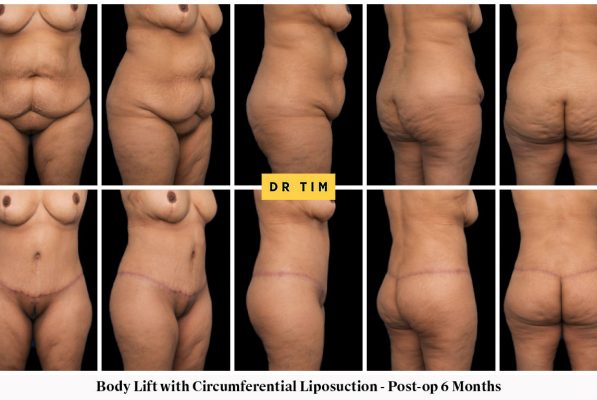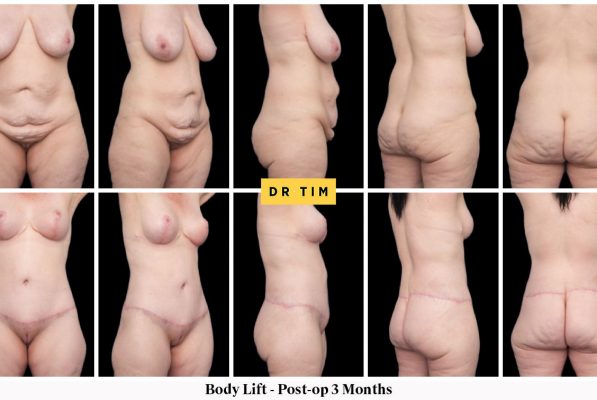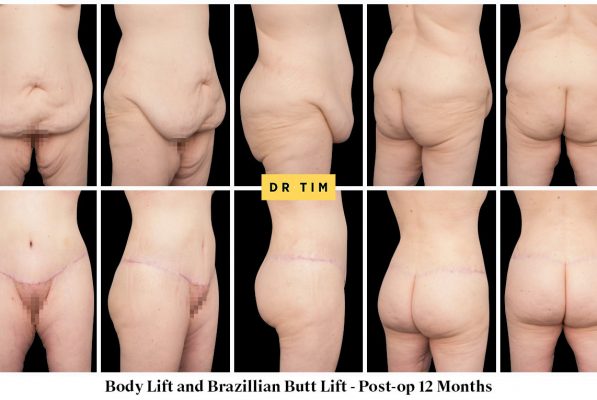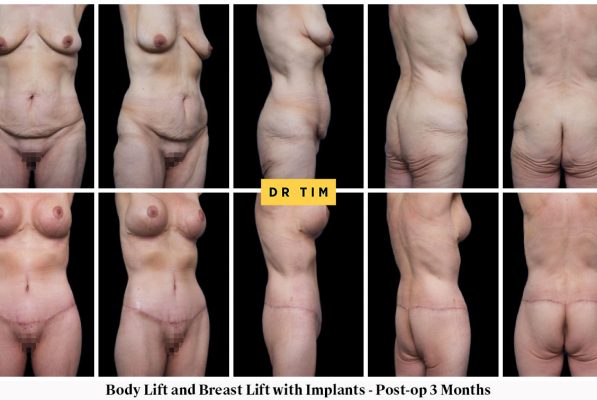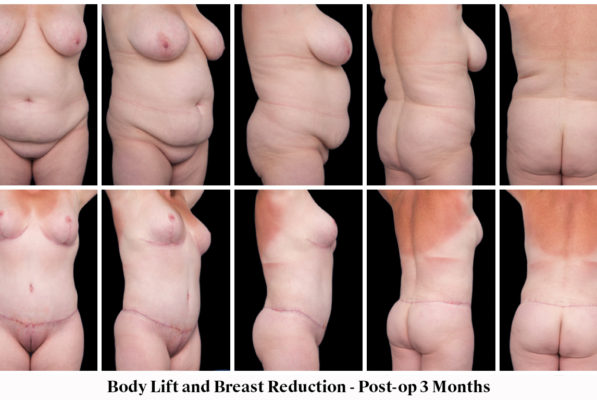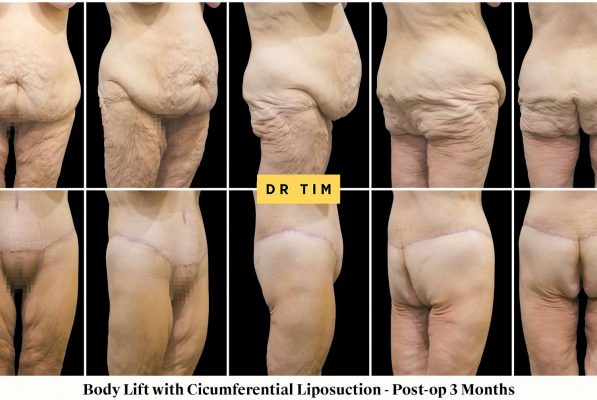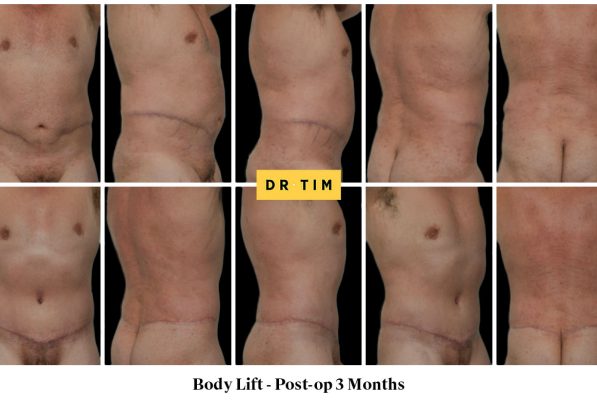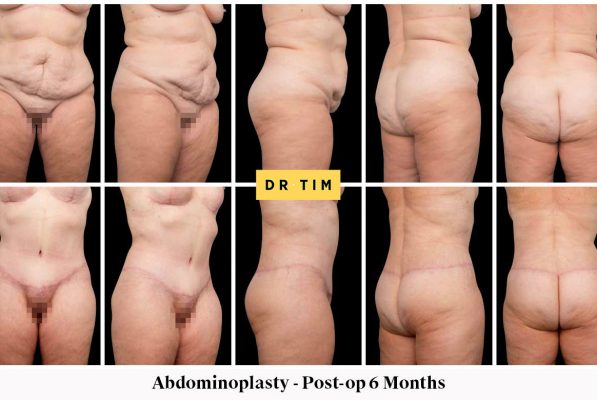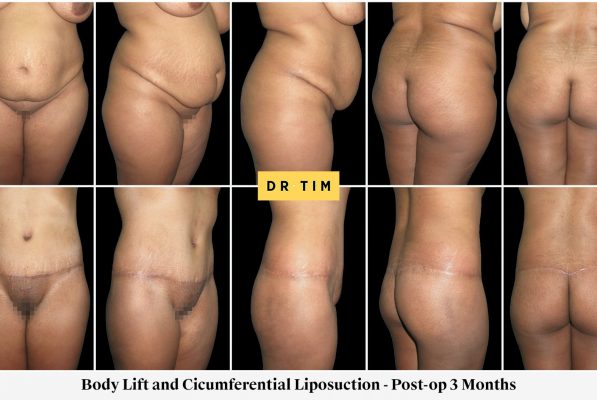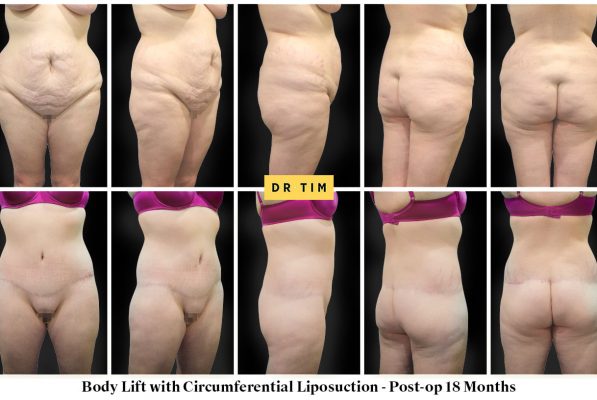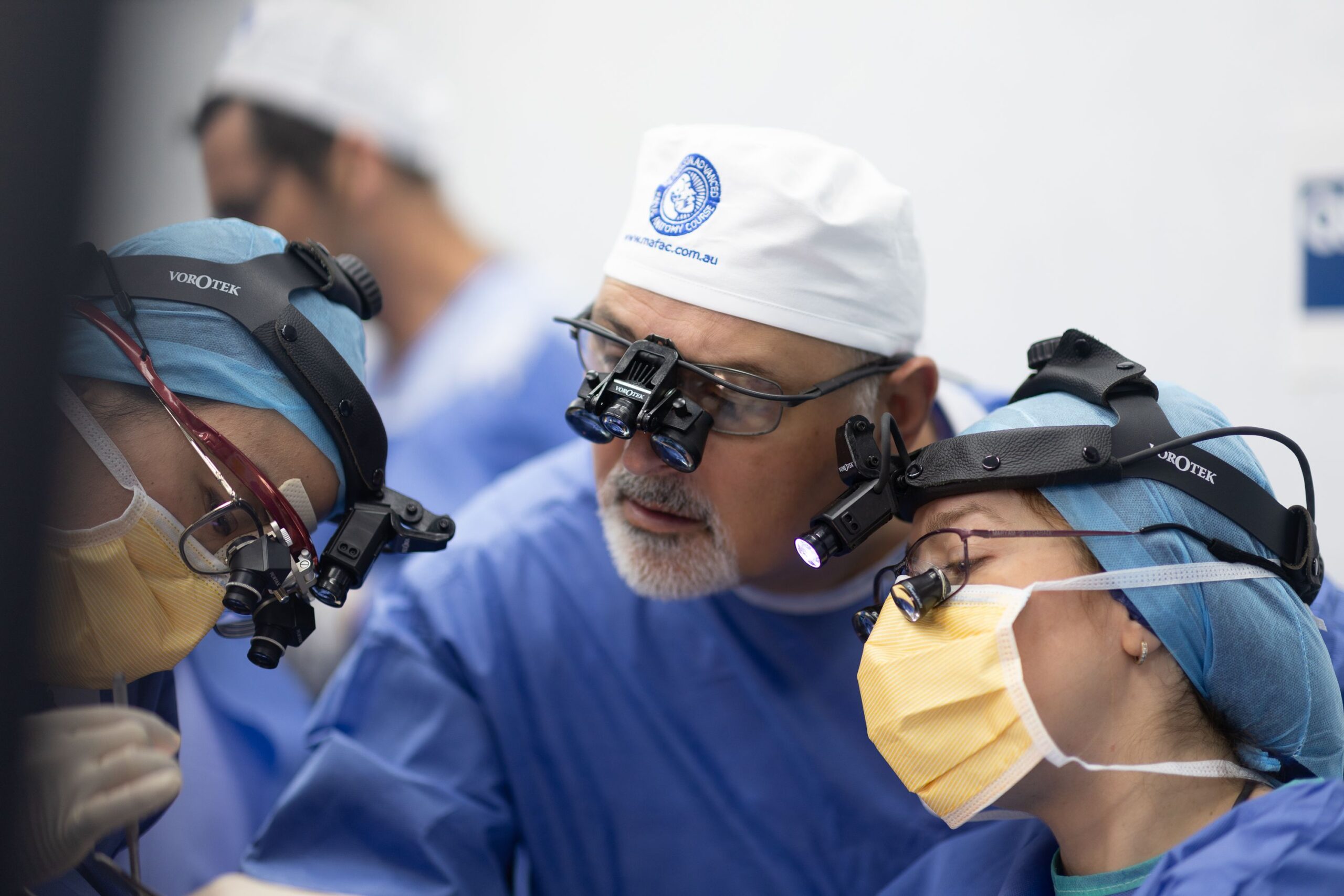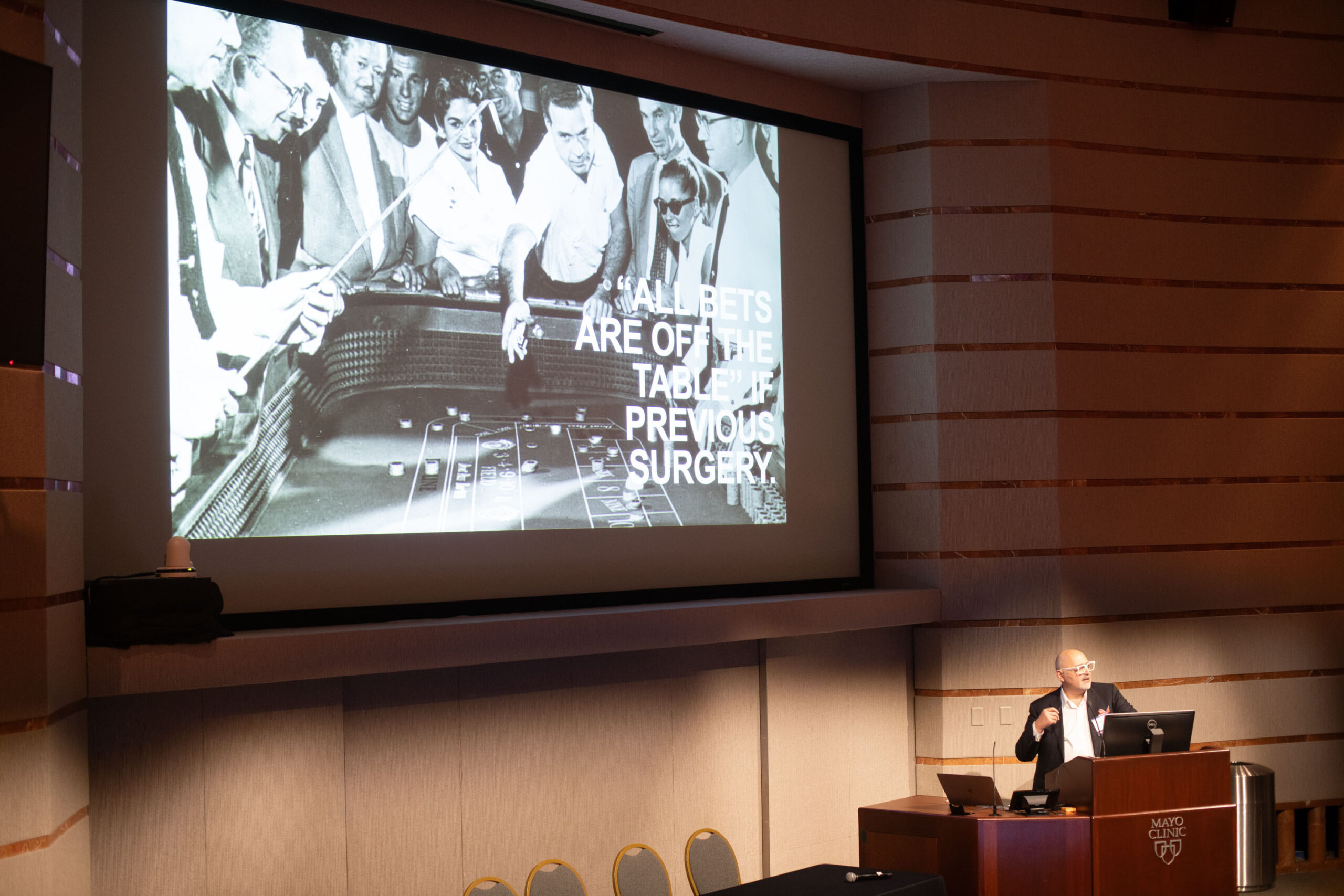Lower Body Lift in Sydney
Technical Explanation of the Procedure
A lower body lift is a comprehensive surgical procedure to remove excess skin and fat from the abdomen, buttocks, thighs, and flanks. It is often performed after significant weight loss or pregnancy. This procedure helps tighten and reshape the lower body, enhancing contours and skin elasticity for a smoother, more toned appearance.
Key Steps in the Procedure:
- Incisions: A circumferential incision is made around the waistline, allowing access to the lower abdomen, flanks, and buttocks.
- Excess Skin and Fat Removal: Excess skin and fat are removed, and the remaining skin is pulled taut for a firmer appearance.
- Muscle Tightening (Optional): If the abdominal muscles are lax, the surgeon may tighten them for additional contouring.
- Reshaping and Lifting: The buttocks and thighs are lifted and reshaped to achieve balanced body proportions.
- Closure: The incisions are meticulously closed with sutures, and surgical dressings are applied to support the treated areas.
A lower body lift is often customised based on the patient’s anatomy and goals, and it may be combined with other procedures, such as liposuction or an upper body lift, for comprehensive results.
Quick Facts About Lower Body Lift Surgery
- Procedure Duration: 4–8 hours, depending on the extent of the surgery.
- Anaesthesia: General anaesthesia.
- Hospital Stay: 1–2 nights, depending on the complexity of the procedure.
- Results: Immediate improvement; final results visible after the swelling subsides (3–6 months).
- Longevity: Permanent with a stable weight and healthy lifestyle.
- Best Candidates: Individuals with significant skin laxity after weight loss or pregnancy, good overall health, and near their target weight.
What to Expect
Before Surgery:
During your consultation with Dr. Tim, your body contours, skin quality, and overall health will be assessed. A personalised surgical plan will be created to address your unique needs. Pre-operative instructions, including fasting and avoiding specific medications, will be provided.
During Surgery:
- Step 1: A circumferential incision is made around the waist, allowing access to the lower abdomen, hips, thighs, and buttocks.
- Step 2: Excess skin and fat are removed, and the underlying tissues are repositioned for a smoother contour.
- Step 3: The skin is tightened and redraped, and sutures are placed to close the incisions.
- Step 4: Surgical drains may be placed to prevent fluid buildup and support healing.
After Surgery:
Depending on the extent of the procedure, you will be closely monitored in a recovery area before being transferred to a hospital room or discharged home.
Risks
While lower body lift surgery is safe and effective when performed by an experienced surgeon, potential risks include:
- Infection or delayed wound healing.
- Scarring (strategically placed and typically fades over time).
- Seroma (fluid accumulation) or hematoma (blood pooling).
- Changes in skin sensation (temporary or permanent).
- Blood clots or anaesthesia-related complications (rare).
- Dissatisfaction with results, which may require revision surgery.
Recovery Tips
- Follow Post-Operative Instructions: Adhere to Dr. Tim’s guidelines for wound care, medications, and activity restrictions.
- Wear Compression Garments: These garments help reduce swelling and support the treated areas.
- Rest and Hydrate: Adequate rest and hydration are crucial for a smooth recovery.
- Avoid Strenuous Activities: Refrain from heavy lifting, exercise, or intense activities for at least 6 weeks.
- Sleep Comfortably: Keep your upper body slightly elevated and avoid sleeping on your stomach to minimise incision strain.
- Gentle Movement: Light walking can help improve circulation and reduce the risk of blood clots.
- Scar Care: Use recommended treatments to minimise scarring as incisions heal.
This content is suitable for an 18+/adult audience only
These photos are of consented patients of this clinic/medical practitioner and have not been altered or digitally enhanced.
Outcomes shown are only relevant for this patient and do not necessarily reflect the results other patients may experience, as results may vary due to many factors including the individual’s genetics, diet and exercise.
Click on the images below to enlarge


